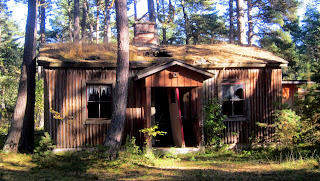I love lecturing about ARCHAEOLOGY. But this time I felt like it almost got the best of me ;)
Very different atmospheres, very different spaces far away from each other both mentally and geographically and only 24 hours to do it... A challenge indeed, at least if you try to take in the audience and give it your best (and add the very short time of daylight in Finland this time of year).
First off was Hanko S Finland "Hangö Brankis" where I was awarded a grant (for 2015) from Spabanksstiftelsen i Hangö for my conflict archaeology project of the German WWII camp in Tulliniemi. The welcome was overwhelmingly friendly with some 200 people participating.
As I had to prepare for my upcomng lecture in the town hall (an hour later) I was not able to participate for more than half an hour. I really would have liked to stayed to watch the program but...
"Hangö Brankis"
Lecture one in Hanko (Hangös stadshus Foajén) was for a very motivated group of some 50 locals (in Finnish) about the conflict archaeology of "Deutsches Lager Hanko". Two hours passed by in a flash with great discussions afterwards. Then a two hour drive home back to Espoo in the dark and (early) bedtime at 24hrs.
Hangö stadshus "Foajén".
The next morning I woke up at 06 a.m. and headed for Helsinki city centre and the University of Helsinki were I was expected to hold lecture about Science Education and Community Archaeology. Professor Hannu Salmi welcomed me in the wonderful late 19th century Auditorium.
Helsinki University (Pengerkatu 1)
To my great surprise university students just kept coming and coming, finally filling the whole Auditorium (some 150 places), a lot more than I had expected! After professor Salmi´s almost 90 minute lecture it was my time to hit the stage in front of a a somewhat stressed out croud. The original seats in the very old auditorium are from "h-ll".
Science Centre Education in HEUREKA.
Not at all prepared for such a large academic audience I really had to "go for it" in the beginning but after about 20 minutes I felt I got contact and at the end of my presentation we finally had some lovely constructive discussions with the students. Phew... :)
Clay Idols (and Conflict Archaeology) with University students.
Home again after all this, feeling good. "Learning by Doing"... Me too :)























































